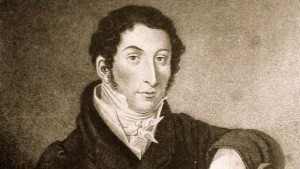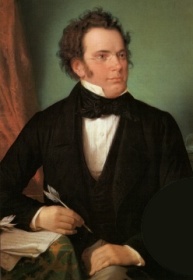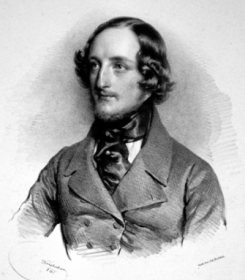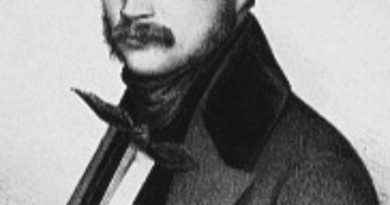Beethoven Franz Liszt Schubert Thalberg and Weber – Great Pianists
While Muzio Clementi was still living and active as composer and pianist, Ludwig von Beethoven, 1770-1827, appeared in the arena of art. His technique is said to have been defective, and it is claimed, that as a pianist he was excelled by some of his contemporaries. In the art of improvising he was, however, truly great. He never aimed to astonish or to dazzle with his skill on the piano, but faithfully served the highest purposes of art.
He developed, yes, he revolutionized the art of piano-playing through his matchless piano works. Marx said, “that he who plays one Fantasia by Thalberg, knows them all, he who plays one Sonata by Mozart, feels them all, but,” continues he, “Beethoven must be studied over again with every Sonata.

While he who wishes to play the works of this master must have a good technique, he needs still more than this, namely, a high degree of intelligence.” Beethoven used both the Vienna and English piano, and recognized the superior qualities of the latter. This led him to persuade Stretcher, then the greatest manufacturer of grand pianos in Germany, to adopt English models. Of Beethoven it may well be said that he anticipated the pianos of to-day.
Carl Maria Von Weber
During Beethoven’s life time, Carl Maria von Weber, 1786-1826, became famous as composer and pianist. He was a brilliant player, full of fire and power, and for all very graceful. He gave many concerts, but exerted by far the greatest influence through his compositions. His piano pieces, especially his “Invitation to the Dance,” were played everywhere, while no pianist of note failed to study his “Concert-stuck.”
Franz Schubert Liszt and Sigismund Thalberg

Franz Schubert, 1797-1828, also influenced the art of piano playing, though he was not a great pianist. He exerted an influence through his piano compositions, which became, however, but gradually known. Like Weber, he is classed among the Romanticists, while all the preceding players and composers belonged to the classic school. Suddenly there appeared two great luminaries among concert players, manfully Sigismund Thalberg and Franz Liszt. The former was born at Geneva, on the 27th of January, 1812. He was pupil of Hummel and Sechter. His career as concert player was brilliant, he having appeared not only in all the large cities of Europe, but also in those of our country. He died near Naples, Italy, on the 27th of April, 1871.
Of Franz Liszt the student will find a biographical ketch later among those of living pianists. If the players of the Viennese school made a musical box out of the piano these two masters now turned it into an orchestra. There seemed to be nothing impossible with them on the piano.
Thalberg’s playing was elegant, smooth and exceedingly brilliant, but it was also cold. Most of his piano compositions was mere, glittering show pieces. He very seldom played anything else than his own works, and the only number not his own we remember seeing on his American programs was Mendelssohn’s song without words, called the “Spring Bong.” On the other hand he played his ” Home, Sweet Home” quite frequently, a piece which a great many boarding-school misses nowadays play.
He served self first, and having left ns no art legacy it is not surprising that but a short fourteen years after his death, he should almost entirely he lost sight of. Liszt on the other hand is a man of a more fiery temperament, is gifted with more vivid imagination, while hi fl powers of execution are, and probably will forever remain unsurpassed. He threw everything into shade that had been done before him in the line of piano-playing, and thus it came that when he appeared in concert-rooms he took everything by storm. He revolutionized the art of piano-playing, as well as the art of piano-making.
The instruments of those days were far too weak for the powerful touch of this master, and stronger ones were the result. He gave an impetus to piano making, which led to the production of the American piano, the best in the world.
Sigismund Thalberg and Franz Liszt

While Liszt in his younger days indulged in much show-work, and while many of his piano works cannot lay any claims to being artwork, he did a great deal towards art development by transcribing orchestral and vocal compositions, and by popularizing them through his concerts. Indeed, it may be said, that he introduced Schubert’s songs to the world, by singing them, so to speak, upon the piano.
Liszt is and will in all probability remain the king among pianists. The playing of these two masters, but especially that of Liszt, affected the entire musical world. Young men and young women doubled and trebled their energies in order that they might become Liszt or Thalberg.
Their number is so large that it is impossible, in a brief sketch like this, to notice them all. Some of them were indeed remarkable players, for all, none ever reached, much less surpassed Franz Liszt.
One player among them we must mention, namely, Carl Tausig. He was born in 1841, and received his first instructions from his father, who was an excellent pianist. Later he took lessons of Liszt, and so rapid was his progress, that his teacher is reported to have said, ” He will cause me to be forgotten as a pianist.” While Carl Tausig could of over shadow Liszt, he approached him very closely.
He died when quite young, on the 17th of July, 1871. Many enjoyed his instruction, and all agree that next to Liszt he was the greatest player.



